How To Focus Camera At Night
Focusing at night can be difficult. In this tutorial I review some of my favorite tips and techniques for focusing a camera lens in the pitch dark and I innovate a tool to make the process even easier.
Introduction
If you've tried astrophotography or whatever kind of night photography earlier, you lot'll empathize the typical frustrations surrounding focusing. Autofocus doesn't work, at to the lowest degree not reliably, the readout on the LCD is oftentimes very nighttime, and the infinity mark on your photographic camera or lens is oftentimes not super authentic.
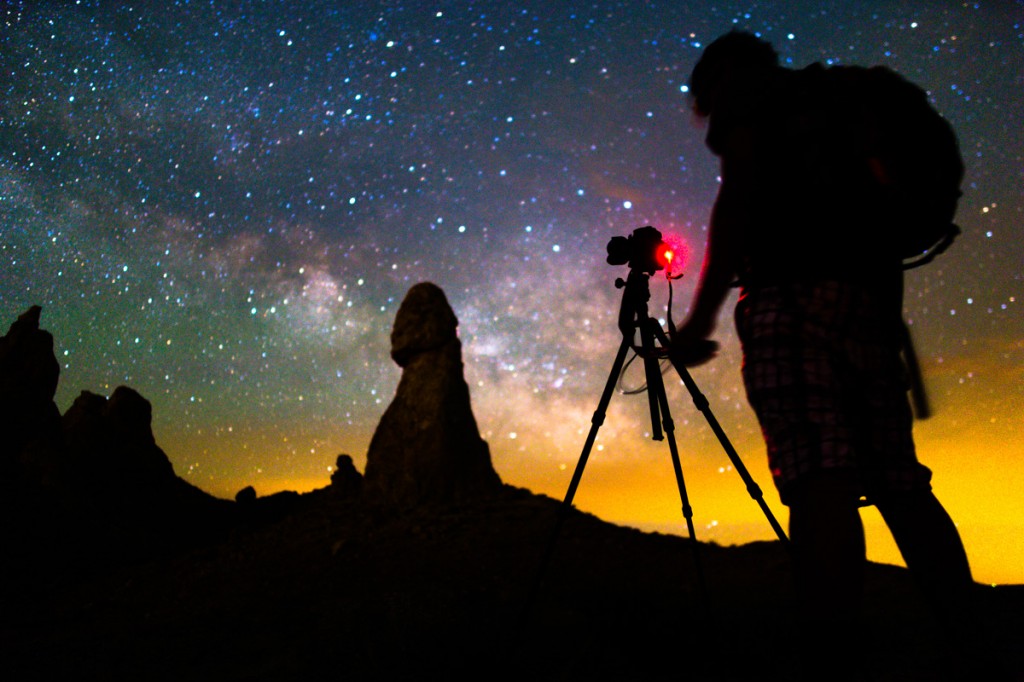
Some modern cameras like the Sony a7S (full review) or a7SII tin autofocus in very night conditions as depression as -4 EV but on a moonless night in the backcountry, the sky can be dark as -ix EV or lower. That's really really dark. At that level of darkness, most autofocus systems, even on the Sony a7S, will typically neglect to catch sharp focus. There are some cases where the brightest stars or distant light sources may allow an autofocus system to catch focus, but information technology'due south commonly hard and rarely accurate. When shooting astrophotography and night landscapes, we usually need to rely on manual focusing techniques for the best possible focus.
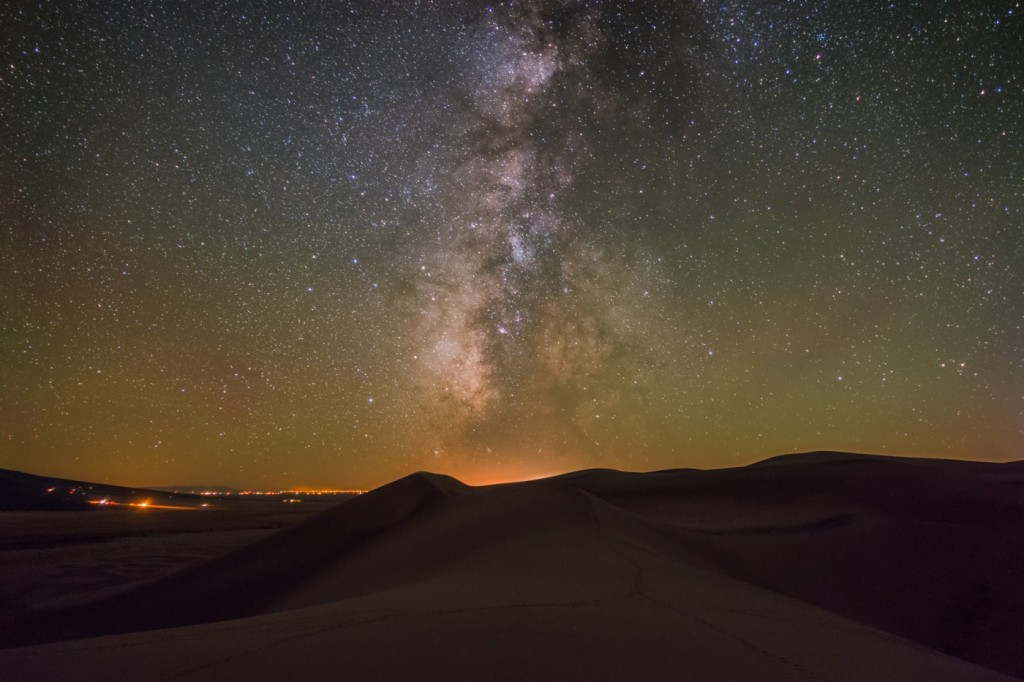
The Technique
Let's review the basic steps and and then we'll jump in to my favorite techniques and tips to achieve perfect focus on the stars.
Enable Manual Focus
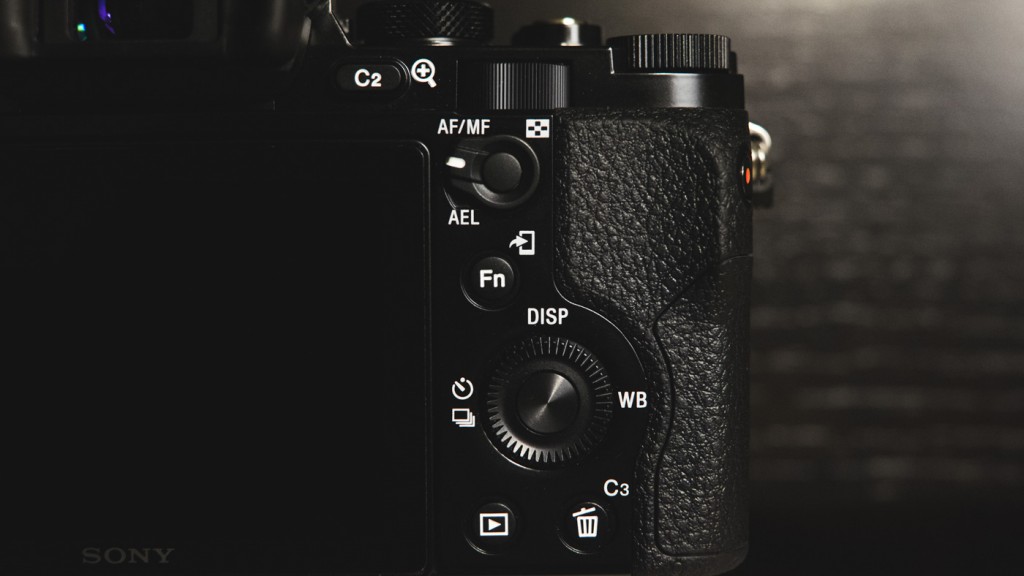
Even the all-time autofocus systems are unreliable in dark sky conditions. Set your camera lens or camera to manual focus mode. Manual focus volition allow us to more carefully and precisely scrutinize our focus.
Pre-Set the Lens to the Infinity Mark if Possible
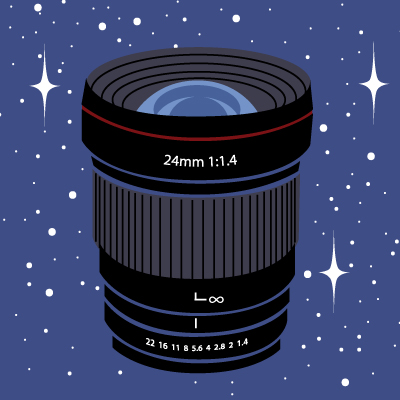
If your lens has an infinity mark, set the focus at that place. This will requite us a decent start on our focus and assistance u.s.a. frame a bright star or calorie-free source. Don't rely solely on the infinity mark though. While "true infinity focus" is what we want, lens markings are rarely perfectly accurate. For the absolute best focus, we'll need to refine it farther. Let'south talk about how to do that next.
Enable Live View if on a DSLR
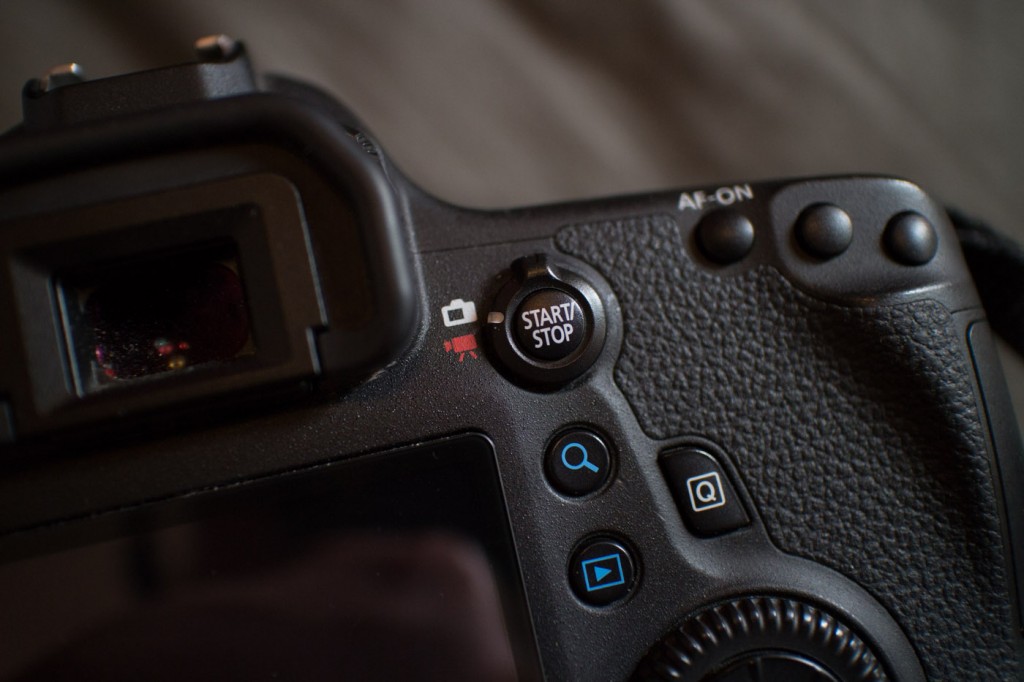
If yous're using a DSLR, you'll desire to enable alive view fashion and then that y'all can apply the back LCD monitor to frame your shots. The eye-level viewfinder will usually be also night to see through. Live View tin help us past amplifying the scene electronically and allow united states of america to magnify the image on the LCD. Using your photographic camera's magnified Live View mode is the most accurate method of focusing on the stars. If you're on a mirrorless camera, you'll already exist composing with the LCD monitor so just make sure that your dorsum screen is on.
Pre-Set up the Exposure
Before y'all outset framing, set your camera to Manual fashion and enter in the exposure that yous wish to use. If yous're not sure nearly what settings to utilise yet, check out my Milky Way Exposure Calculator. The settings from the calculator should be skillful for focusing on the stars with virtually cameras but it might be helpful in some cases to apply an especially high ISO like 6400 or 12800. Try it out to encounter if it makes the stars more than visible to help with focusing. Nearly cameras, just by setting the shutter time to a long exposure, will heave the Alive View feed sufficiently to be able to frame and focus on a brilliant star, no need to increment the ISO too loftier. If this is your start time shooting photos of the stars, bank check out my tutorial on how to photograph the Galaxy.
Middle the Brightest Star… or Something Distant and Bright
Point your camera toward the brightest star you tin find in the heaven and put it in the very center of your frame. Using your camera's magnification feature to zoom into the live view feed can help you spot dimmer stars.
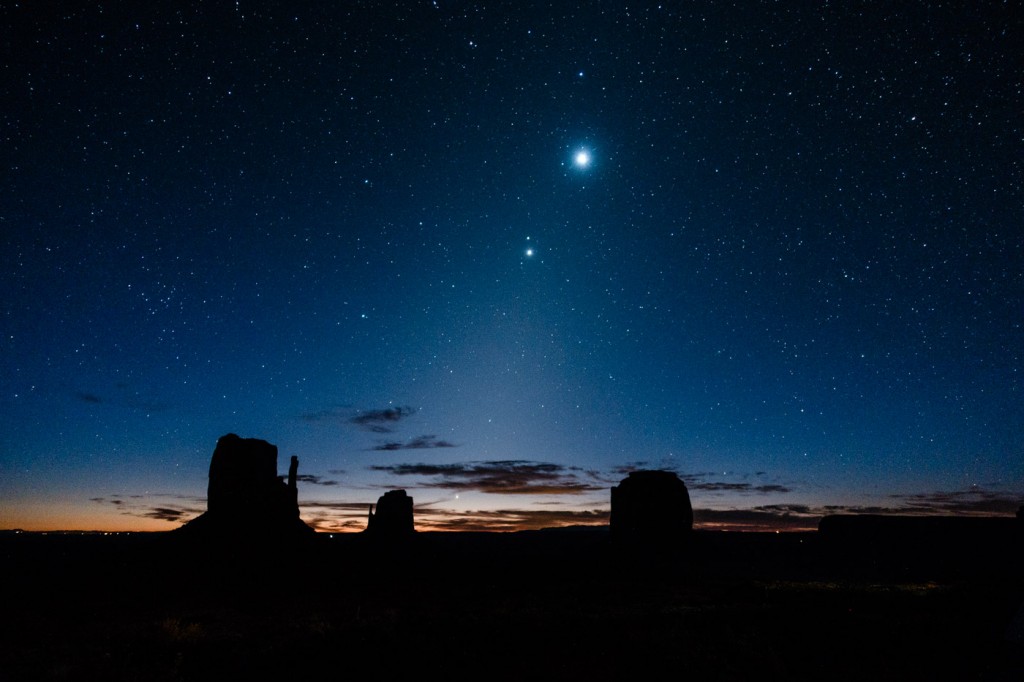
If you are having trouble finding a bright plenty star, you can also utilize an artificial light source. A distant building, far off boondocks, roadway, bright tent or your own headlamp can work. I've fifty-fifty heard of some photographers using the spot from a laser pointer.
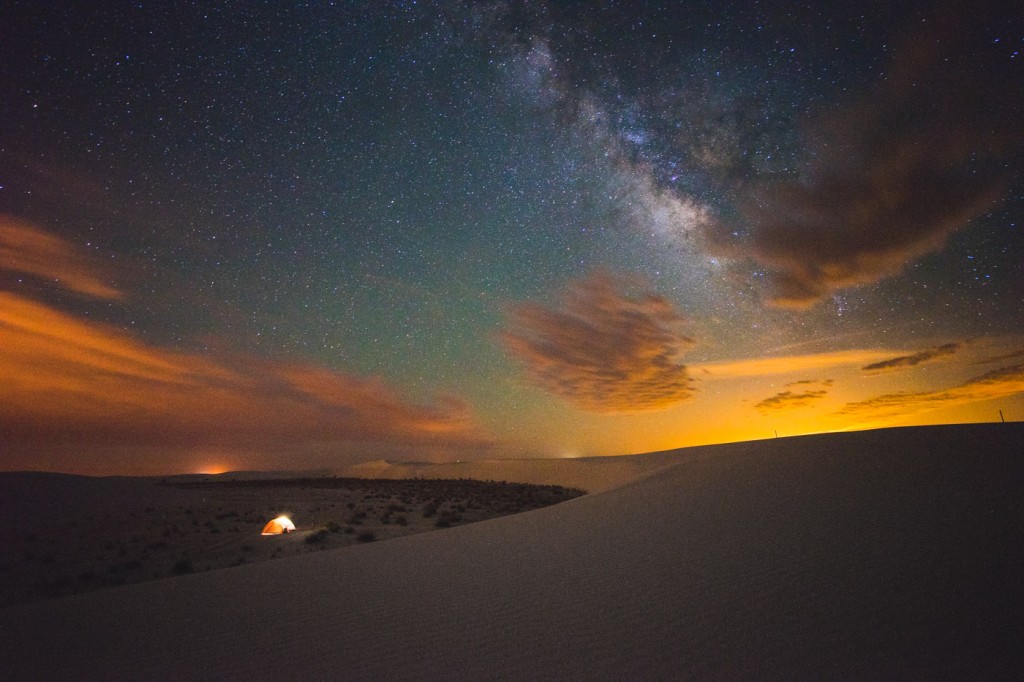
The important thing when using an bogus light source for focusing is that information technology must exist far away. Make sure it'due south at least 100 feet or thirty meters abroad. That should exist sufficiently far away for focusing most standard or wide angle lenses. As long as the thing on which we're focusing is far enough, information technology should allow usa to achieve "true infinity" focus.
Focusing Aids
Apply Alive View and the digital magnification role to zoom the view on the star or afar light source and adapt the transmission focus ring until the star or light appears in focus. How practice we know when it's really in focus? There are a number of unlike indicators of good focus and here are a few that I commonly await for:
Size
When focusing on a bright star or artificial low-cal source, wait at its size. Perfect focus is when the star looks as small and pinpoint-similar equally possible. Out of focus stars will obviously appear softer but they will besides tend to show a picayune more more color, sometimes due to spherochromatism every bit I explain below. When in focus, most stars, even the dimmer ones, should look small, abrupt, bright and nigh white.
Dim Stars
Look adjacent to your bright focusing star. Information technology'southward normally possible to start seeing some of the dimmer stars on the LCD every bit you near perfect focus. Dim stars will go very diffuse and will nearly disappear from view if yous're not focused properly and so try to find the point of focus where the dimmer stars are about visible.
Spherochromatism
Many fast, big-aperture lenses like the ones we like to use for photographing the Milky Way, showroom a course of spherical abnormality call spherochromatism. Spherochromatism causes high dissimilarity out-of-focus highlights to shift in color to create green or magenta halos. When focusing on a vivid star, information technology'southward often possible to find a star shift in colour from greenish when focused too close to magenta when focused too far. Perfect focus is usually very close to the betoken in-between when the star appears neutrally colored, neither predominantly green nor magenta.

If you're having trouble getting the star to exist completely neutral, I recommend erring on the side of the magenta shift just because magenta halos tend to appear more natural around a star than green ones. Ideally, the star should expect neutral in color. Information technology's ordinarily OK if your stars are a trivial chip stretched due to star trailing. If this bothers you, simply reduce your shutter fourth dimension a lilliputian flake. You can calculate a proficient starting exposure with our Milky way Exposure Calculator.
Shoot and Check
When you lot think you've achieved decent focus via the indicators above, shoot a examination shot and check the results. Use your camera's magnification function when reviewing the image to brand sure you have perfect focus. Making a test shot should always be the last cheque. And remember to double check later a few more shots in gild to brand sure the focus is still in tune.
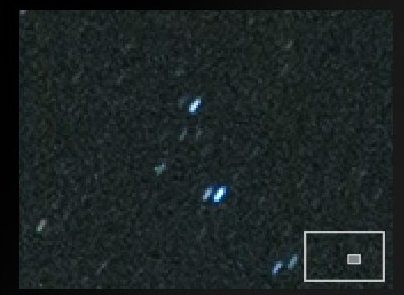
Lock it Down and Shoot Away
In one case yous're confident in your focus, information technology's often an fantabulous idea to lock it downward past carefully taping your focus ring with a piece of gaffers record. It's easy to stick but doesn't go out whatsoever balance.
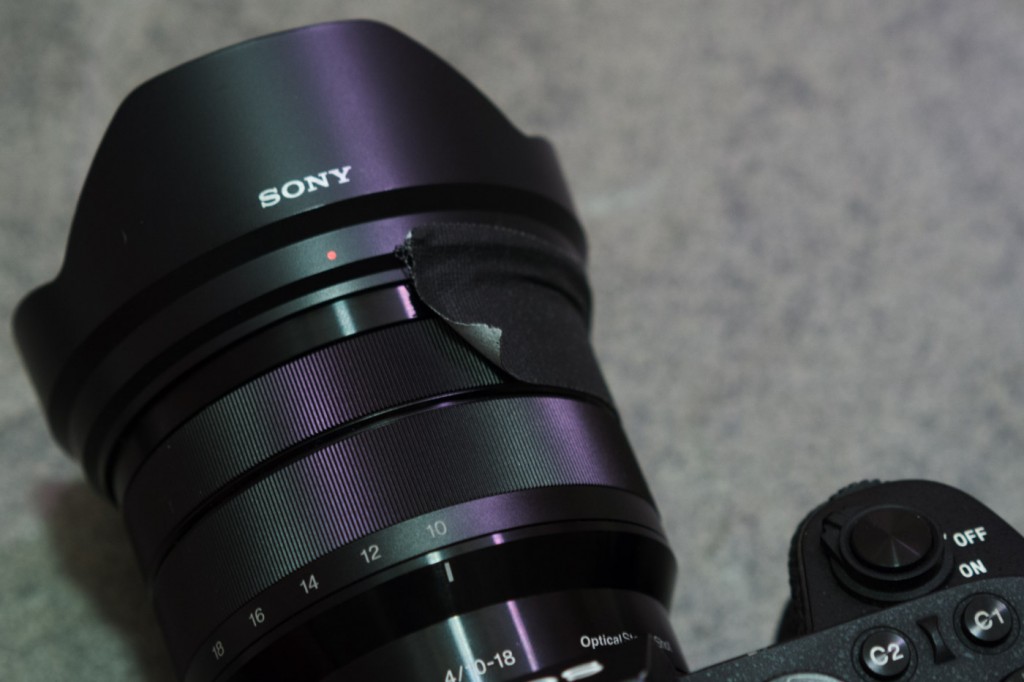
I always continue a little bit of gaffers tape wound around an former unused plastic menu similar an expired credit card and so that it fits easily in my camera bag. In that location are some small gaffer tape rolls bachelor similar the MicroGaffer, merely you'll get more for your money if you make one yourself, plus the flat profile of a credit carte is fifty-fifty more meaty. No one wants to lug around an entire roll.

When your focus is locked downwardly, it'due south probable that you won't need to adjust it all night. Just be careful to not bump it, even gaffers record can come up undone with a good knock.
Even Better Focus: Use a Focusing Mask
While the higher up methods should help you get decently accurate focus, there'south a certain lack of precision in the method of "focus until it looks best." There's always that last lilliputian chip of uncertainty surrounding traditional focusing methods. That last niggling fleck of throw in the focusing ring is usually the virtually hard to truly primary. So how practise we know if our focus is really as expert as it gets?
As it turns out, there'southward really a tool that astronomers accept been using for years that gives a precise indication of focus success: the focusing mask. At that place are a number of different types of focusing masks but the near popular one that I know about at the moment is chosen the Bahtinov Mask.
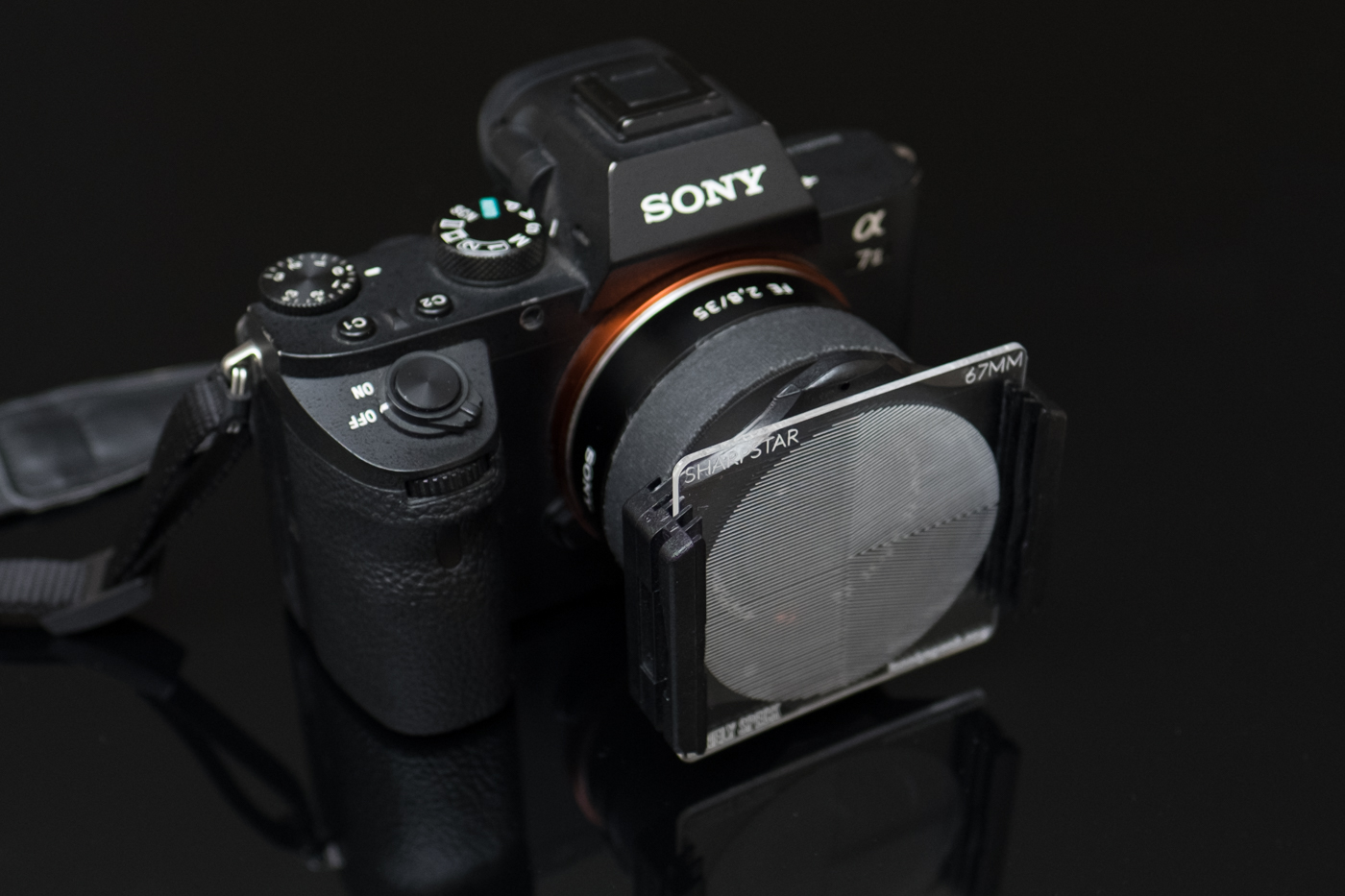
The Bahtinov Mask (wikipedia) was developed by an amateur astronomer named Pavel Bahtinov. It's a elementary mask that covers your photographic camera lens. It has a special slit pattern cutting in the mask that produces three distinct diffraction spikes around the brightest stars. Because of the arrangements of the slits, the shape of the diffraction pattern changes as you focus. When all three diffraction spikes are lined upwardly symmetrically, the paradigm is in perfect focus on the star.

While I was writing this article, I made a new design for a Bahtinov mask that would fit into a standard 67mm, 85mm or 100mm filter holder like the Formatt Hitech Filter Holder that I use. It's special design is an improvement upon the traditional Bahtinov mask so that it works on nearly any camera lens. I'm calling my focusing mask the SharpStar2 past Lonely Speck. I make the SharpStar2 in the USA and send them out myself. I've now sold hundreds of SharpStars to astrophotographers effectually the world. Read more than about the SharpStar by clicking the button below.
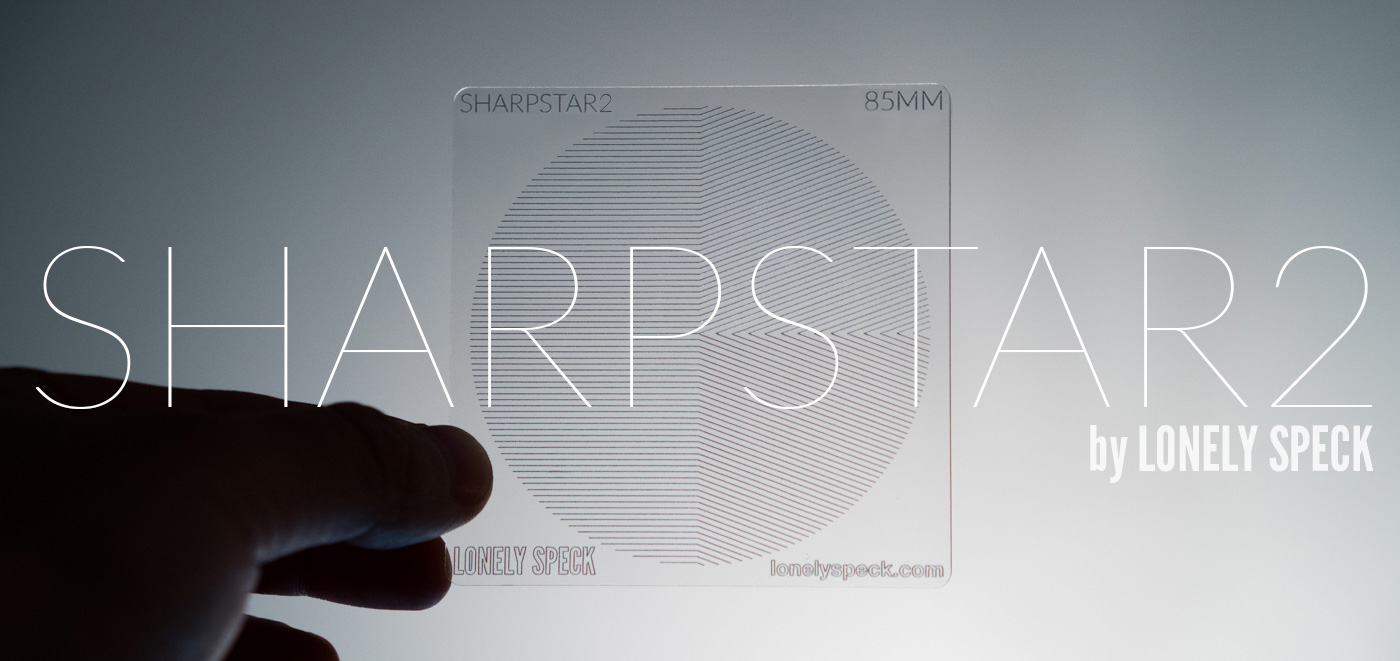
[button font_size="20″ color="#c8232b" text_color="#ffffff" url="https://world wide web.lonelyspeck.com/sharpstar/" target="_blank"]Order the SharpStar Now[/button]
The SharpStar2 is an improved blueprint of our original SharpStar that works on most lenses, even relatively irksome wide angle lenses similar a typical 18-55mm f/3.v-five.6 kit lens. I now use the SharpStar2 for most of my astrophotos. Even the tiniest changes in focus are immediately apparent when using the SharpStar2. It adds a lot more than confidence in the quality of focus and makes the whole process a lot easier. If you want to support Lonely Speck and the SharpStar project, you lot can place and lodge for the SharpStar2 in a higher place.
Q: What if my camera doesn't have Live View?
A: Trial and Mistake: Manually Prepare and Bank check Focus
Many older generation DLSRs do not have a Live View function. If this is the case, yous'll accept to utilise trial-and-error. Set the focus every bit well every bit yous can manually or start information technology at the infinity mark, accept a photograph and review it nether magnification. If it'due south out of focus, take note of the focus ring position, adjust the focus a little flake in one direction and take another photograph and review it over again. Repeat until you are convinced that you have achieved sharp focus.
Your eyes' dark vision abilities will drastically affect how successful you lot'll be able to see a bright star in an optical viewfinder. Give yourself at least 30 minutes of pure dark, with no artificial light sources (even cherry-red lamps) and then that your eyes can more fully adjust to seeing in the dark.
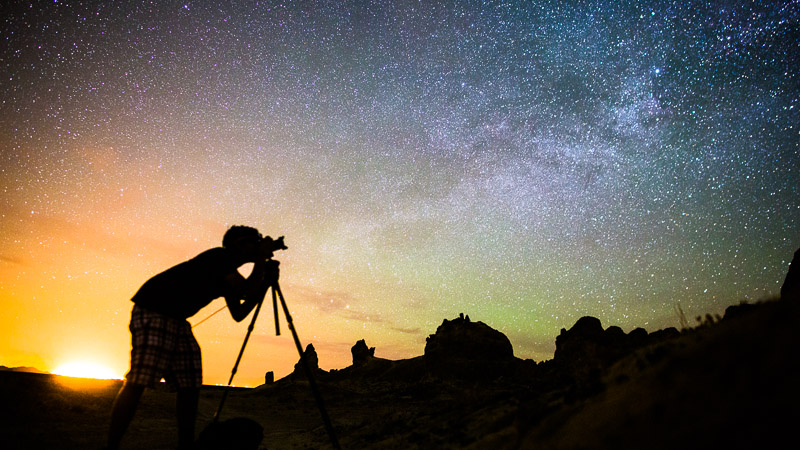
This is a rather time consuming method and requires much patience merely it'south still possible to get adept focus with this method. If you're using a camera without Live View, I might also recommend picking upwardly a focusing mask like the Lonely Speck SharpStar. It at the very least volition give you a proficient indication of focus success upon reviewing a test epitome.
Regardless of the method of focus you decide to use, e'er use the magnify part on your screen preview when reviewing the photo to check the focus. Don't have the initial thumbnail at face up value. Once your shots are in focus, recall that you can utilize a piece of tape to agree the focus ring and forestall you lot from accidentally bumping the focus.
Conclusion
The techniques I outline here are the ones I always utilise for focusing at dark. At that place's aught more frustrating than returning home to discover out that one-half of your photos are slightly out of focus. Don't exist besides disappointed if you're having some trouble at first. Focusing in the dark certainly requires some careful patience. Practice. Check. Re-bank check.
I hope this writeup was helpful. If you have any questions or alternate methods that you apply to assistance with focusing, delight feel free to comment beneath.
Equipment
I'd like to give 1 last shout out to the Sony a7S and a7SII. If in that location'due south one piece of equipment that will make the well-nigh difference for focusing and framing success while shooting astrophotography, it'south probably either one of these cameras. I've used a ton of dissimilar cameras for shooting astrophotography, and the a7S is arguably the easiest to focus because of its particularly high sensitivity CMOS sensor. If you lot want the all-time, get one of these cameras.
Links:
- Sony a7S (Amazon / B&H)
- Sony a7SII (Amazon / B&H)
Disclosure
We are a participant in the Amazon Services LLC Associates Program, an chapter advertising plan designed to provide a means for usa to earn fees by linking to Amazon.com and affiliated sites. We are also a participant in the B&H Affiliate Program which as well allows us to earn fees by linking to bhphotovideo.com.
Learn Astrophotography
Astrophotography 101 is completely gratis for anybody. All of the lessons are bachelor on the Lonely Speck Astrophotography 101 page for you to access at whatever time. Enter your electronic mail and whenever we post a new lesson you'll receive it in your inbox. We won't spam you lot and your email will stay secure. Furthermore, updates will exist sent out only periodically, usually less than in one case per week.
Help us help y'all!
Believe it or not, Lonely Speck is my full-time chore. It's been an amazing experience for united states to see a community develop around learning astrophotography and we're so happy to be a small part of information technology. I have learned that astonishing things happen when you ask for help so remember that we are always hither for yous. If you have any questions virtually photography or just want to share a story, contact us! If you lot discover the articles here helpful, consider helping u.s. out with a donation.
[button font_size="16″ color="#136e9f" text_color="#ffffff" url="https://www.paypal.com/cgi-bin/webscr?cmd=_donations&business=lonelyspeckblog%40gmail.com&item_name=These+tips+help+keep+lonelyspeck.com+running.¤cy_code=USD&source=url" target="_blank"]Donate[/push]
Thanks so much for existence a part of our astrophotography take chances.
-Ian
[button font_size="16″ color="#136e9f" text_color="#ffffff" icon="arrow-left" url="https://www.lonelyspeck.com/astrophotography-101/" target="_self"]Back to Astrophotography 101[/button]
Source: https://www.lonelyspeck.com/focusing-at-night/
Posted by: friskhicess.blogspot.com


0 Response to "How To Focus Camera At Night"
Post a Comment